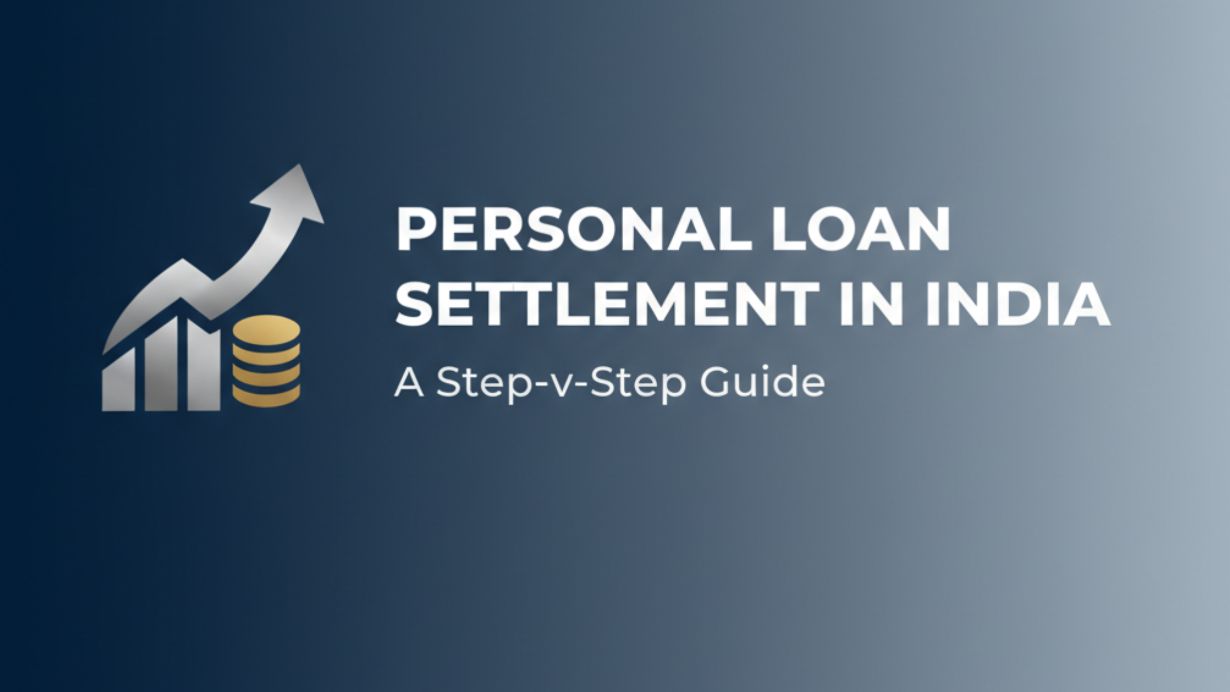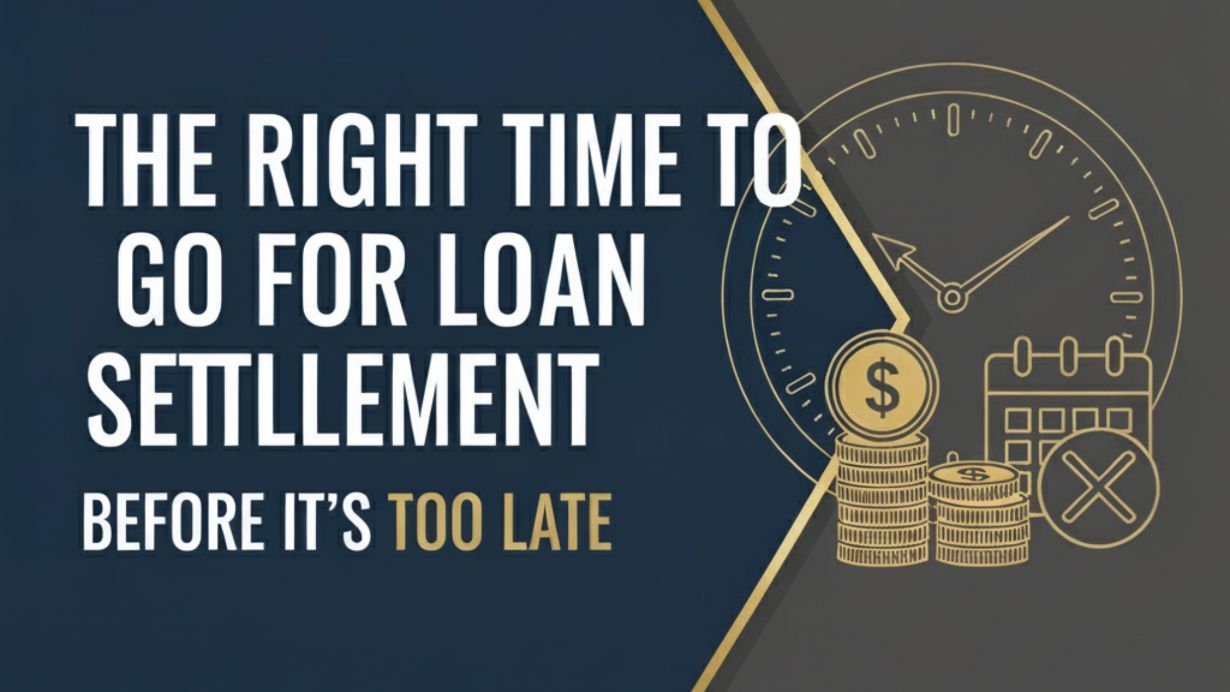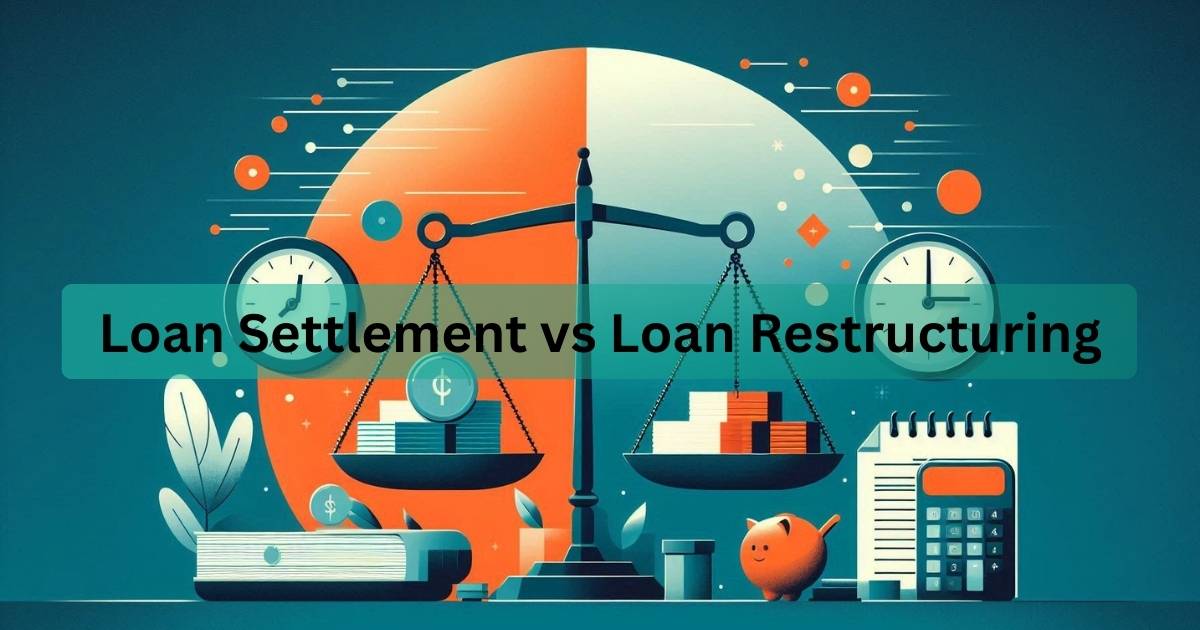· Personal Loan Settlement · 5 min read
Personal Loan Settlement in India: A Step-by-Step Guide
Learn how to settle a personal loan in India. Step-by-step loan settlement process, eligibility, impact on credit score & tips to rebuild credit.

Managing personal loans responsibly is crucial for maintaining financial stability. However, unexpected situations such as job loss, medical emergencies, or business failure can make it difficult to continue repaying your loan on time. In such cases, personal loan settlement is a solution.
But what is loan settlement, and how does it function in India? Here is a step-by-step guide to personal loan settlement, its advantages and disadvantages, and its effects on your credit score.
What Is Personal Loan Settlement?
A personal loan settlement is an agreement between a borrower and a lender to settle the loan account by paying less of the outstanding amount.
Banks do this typically when a borrower is in extreme financial duress. Rather than writing off the loan as a whole, they accept settlement for a lesser amount.
When Can You Opt for a Loan Settlement?
Banks or NBFCs typically accept settlement only under real hardship situations, like:
Job loss or reduction in salary
Medical or health emergencies
Business failure or financial loss
Natural calamities or accidents
Note: Settlement is not closure of a loan. In a normal closure, you pay off the full loan; in settlement, you pay less than the amount due.
Step-by-Step Guide to Personal Loan Settlement in India
Step 1: Check Your Financial Situation
Determine if you can pay your EMIs in the future. Settlement should be your last resort only when repayment is absolutely impossible.
Step 2: Meet Your Lender
Reach out to your bank and describe your financial situation in honest terms. The lender will consider your payment history and determine whether you are eligible for a settlement.
Step 3: Negotiate the Settlement Amount
If you are approved, the lender will provide a settlement amount , typically part of your current dues. Bargain this amount in light of how much you can afford.
Step 4: Receive the Settlement Terms in Writing
Make sure that all settlement terms are well-documented, including:
The settled amount agreed upon
Payment due date
Assurance that the loan will be listed as paid in full
Don’t pay unless in a written agreement.
Step 5: Make the Payment
Pay the agreed amount within the stipulated time using safe, traceable means like demand draft or bank transfer.
Step 6: Obtain a Loan Settlement Letter
After payment is made, ask for a loan settlement letter from the bank. This is evidence that your account has been settled.
Step 7: Verify Your Credit Report
Check your CIBIL or Experian report to ensure that the status is updated. It will likely show as settled instead of closed, this affects your credit score.
Impact of Loan Settlement on Credit Score
While a loan settlement can provide short-term relief, it may affect your credit score.
Consequently, subsequent loan sanctions , for home loans, auto loans, or credit cards , become difficult, and the lender might provide less attractive terms or increase interest rates.
Alternatives to Loan Settlement
Alternatives to settlement are best considered before opting for one:
Loan Restructuring: Request smaller EMIs or a longer tenure.
Debt Consolidation: Combine several loans into one manageable EMI.
Balance Transfer: Transfer your loan to a better-term bank.
Credit Counselling: Take advice from financial professionals to schedule repayments.
Key Takeaways
Always get written evidence of settlement.
Monitor your credit report regularly after settlement.
Rebuild your credit by making timely payments in the future.
Conclusion
A personal loan settlement in India can provide relief in times of financial hardship but has long-term implications for your credit history. Knowing the process, risks, and options will assist you in making an intelligent, well-informed decision.
If you are having trouble making payments, consult a certified debt counsellor or settlement professional to determine the best course of action.
FAQs on Personal Loan Settlement in India
1. Is loan settlement advisable?
Loan settlement is beneficial only in times of extreme financial distress. It hurts your credit score and future borrowing capability, though. Always seek other repayment or restructuring methods first.
2. Loan settlement vs loan closure: What is the difference?
Loan Closure: You pay off the full outstanding balance, and the account is closed.
Loan Settlement: You settle a portion of the pending amount, and your account is reported as settled, influencing your credit score.
3. Can I take another loan after settlement?
Yes, but perhaps not. Lenders might consider you a high-risk borrower. To increase your chances, restore your credit score by paying all subsequent dues timely.
4. How do I restore my credit after loan settlement?
Pay credit card and EMIs timely
Don’t take multiple loans at once
Keep your credit usage low
Regularly check your credit report for mistakes
5. Can I remove the ‘settled’ status from my credit report?
You can request your lender to change the status to ‘closed’ only if you repay the remaining settled amount later. However, it’s at the lender’s discretion.
6. Who can help me with a loan settlement?
You can consult loan settlement companies or financial advisors who negotiate with banks on your behalf. But always verify their credibility before proceeding.
Disclaimer: The information shared in this blog is for general awareness only. Every individual’s situation may differ, and the actual process or outcome can vary based on personal and legal circumstances


 (1).BBangNKS.jpg)
